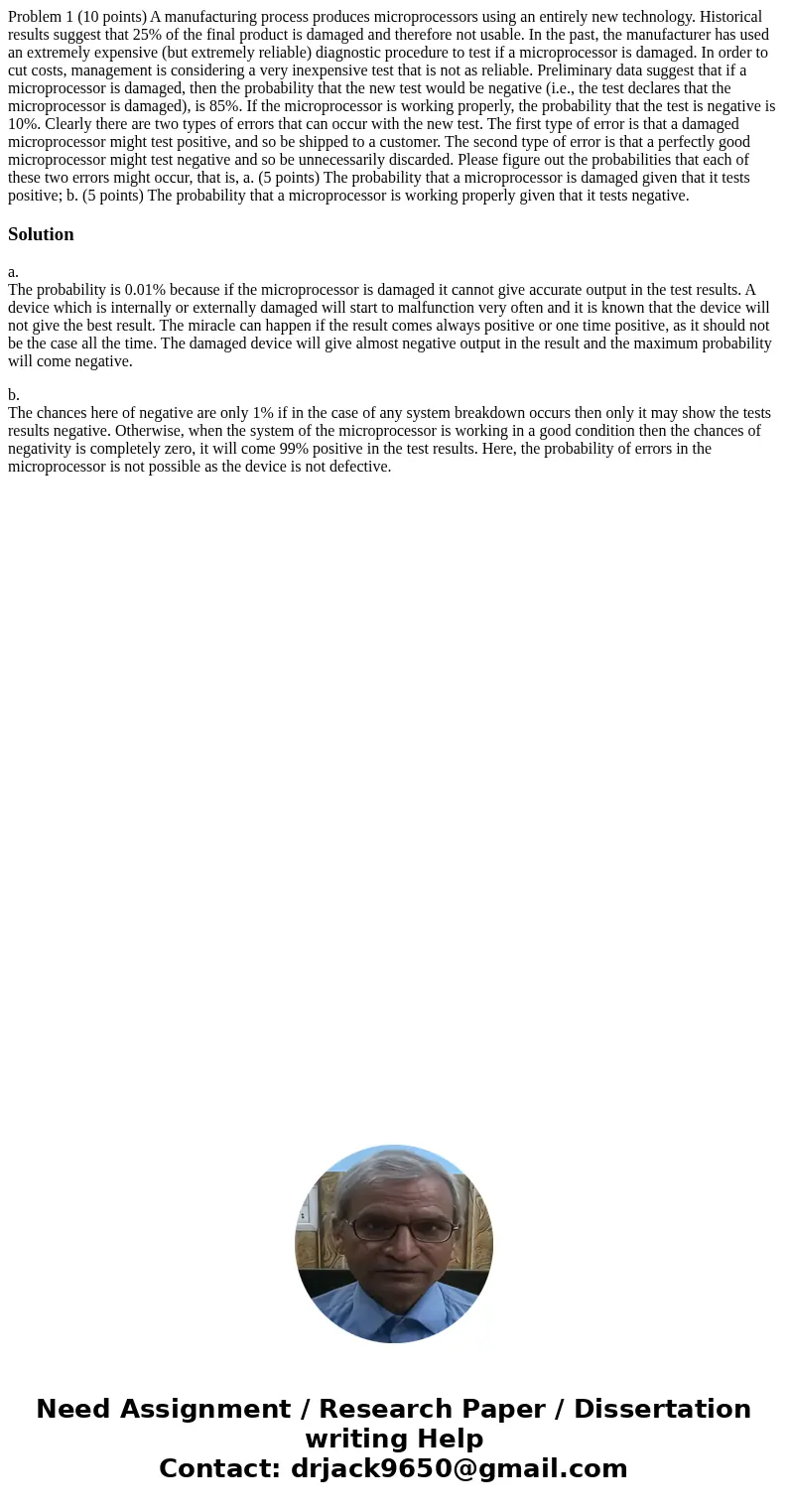Problem 1 (10 points) A manufacturing process produces microprocessors using an entirely new technology. Historical results suggest that 25% of the final product is damaged and therefore not usable. In the past, the manufacturer has used an extremely expensive (but extremely reliable) diagnostic procedure to test if a microprocessor is damaged. In order to cut costs, management is considering a very inexpensive test that is not as reliable. Preliminary data suggest that if a microprocessor is damaged, then the probability that the new test would be negative (i.e., the test declares that the microprocessor is damaged), is 85%. If the microprocessor is working properly, the probability that the test is negative is 10%. Clearly there are two types of errors that can occur with the new test. The first type of error is that a damaged microprocessor might test positive, and so be shipped to a customer. The second type of error is that a perfectly good microprocessor might test negative and so be unnecessarily discarded. Please figure out the probabilities that each of these two errors might occur, that is, a. (5 points) The probability that a microprocessor is damaged given that it tests positive; b. (5 points) The probability that a microprocessor is working properly given that it tests negative.
a.
The probability is 0.01% because if the microprocessor is damaged it cannot give accurate output in the test results. A device which is internally or externally damaged will start to malfunction very often and it is known that the device will not give the best result. The miracle can happen if the result comes always positive or one time positive, as it should not be the case all the time. The damaged device will give almost negative output in the result and the maximum probability will come negative.
b.
The chances here of negative are only 1% if in the case of any system breakdown occurs then only it may show the tests results negative. Otherwise, when the system of the microprocessor is working in a good condition then the chances of negativity is completely zero, it will come 99% positive in the test results. Here, the probability of errors in the microprocessor is not possible as the device is not defective.

 Homework Sourse
Homework Sourse